Abstract
Immune horse sera to 42 enterovirus immunotypes were pooled according to the Lim Benyesh-Melnick and the ”intersecting serum” schemes. Each serum was diluted in the pools to contain 50 antibody units. After it was established that the pools correctly neutralized prototype virus strains, they were evaluated in tests against 273 enterovirus field strains representing most of the viral types included in the pools. With test virus doses of 10-100 TCD50, most of the poliovirus and coxsackievirus field strains were correctly identified in both schemes, but a number of the echoviruses were neutralized by heterotypic pools, particularly in the Lim Benyesh-Melnick scheme. However, at higher test virus doses of 320-3200 TCD50, little heterotypic neutralization occurred in either scheme, and 93-94% of the virus field strains were correctly identified in each scheme. With these larger virus doses, breakthrough tended to occur in homologous pools by the 7th day, but rarely by the 5th day. Since the Lim Benyesh-Melnick pool scheme employs 8 pools as compared with 13 for the intersecting serum scheme, and since the two schemes were equally satisfactory for identifying virus field strains at test virus doses of 320-3200 TCD50, immune horse sera will be pooled by the former scheme, thus utilizing fewer pools, for distribution to qualified viral diagnostic laboratories.
Full text
PDF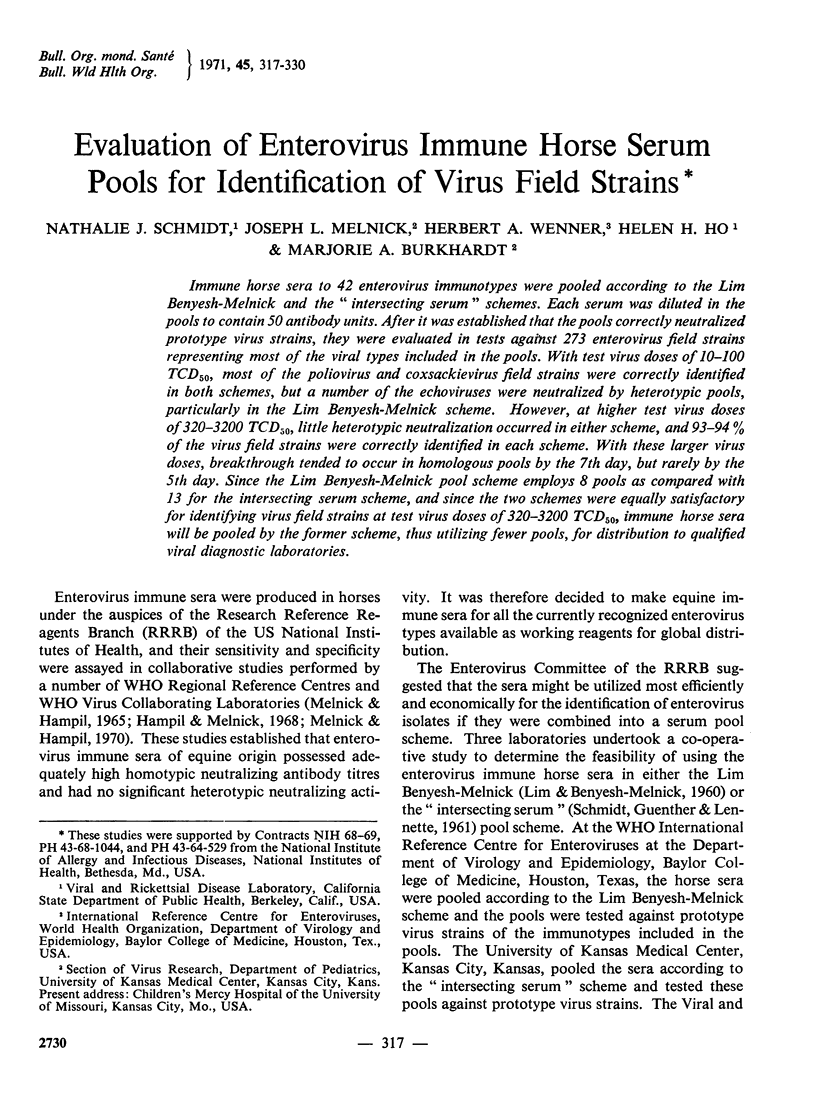
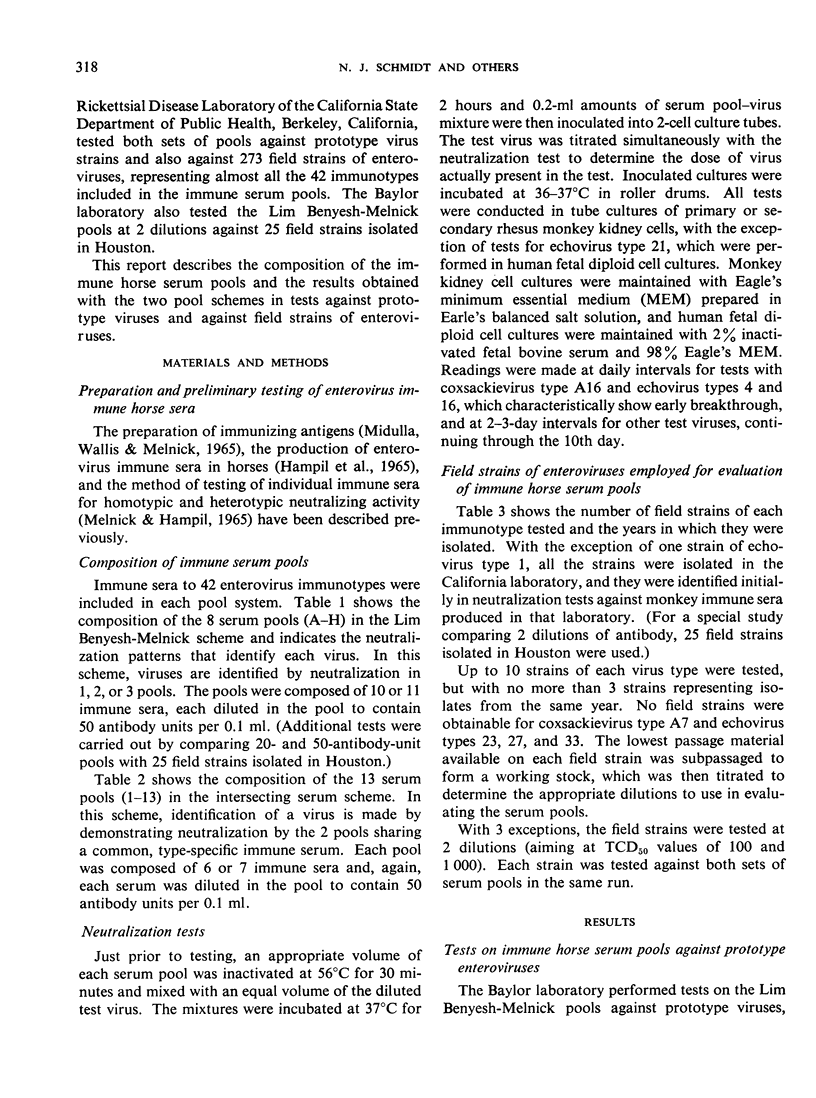
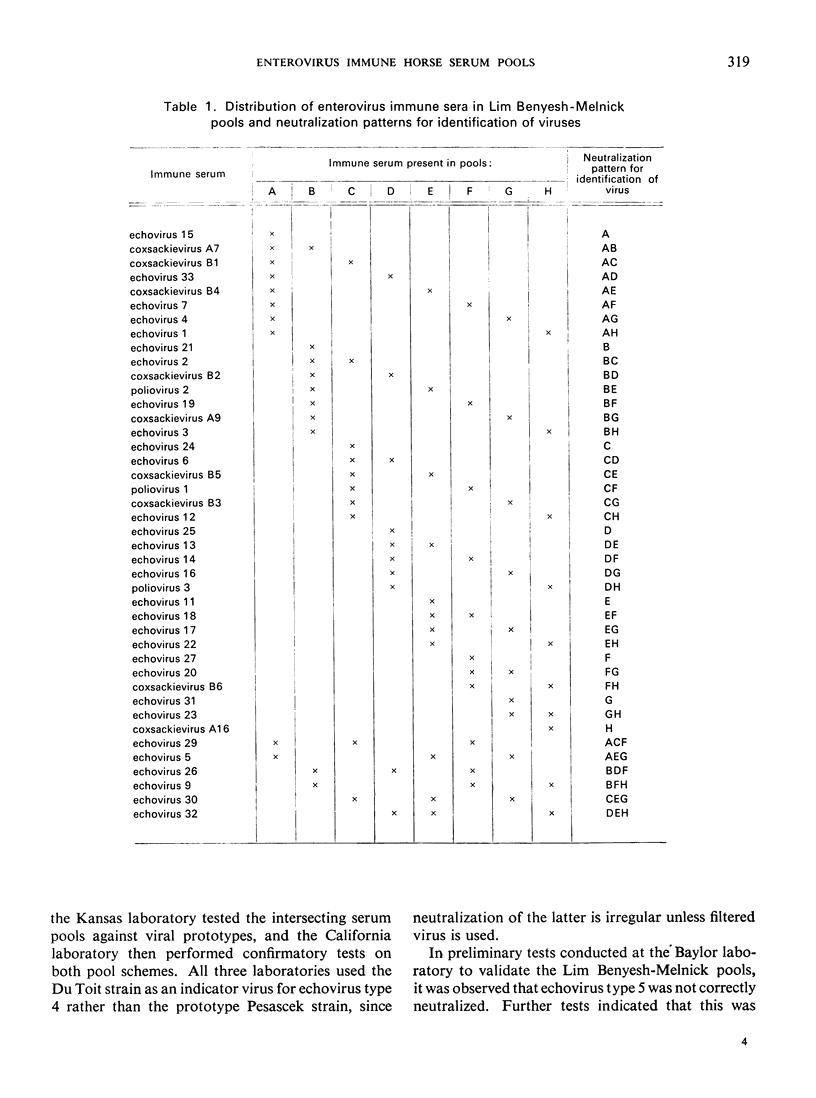
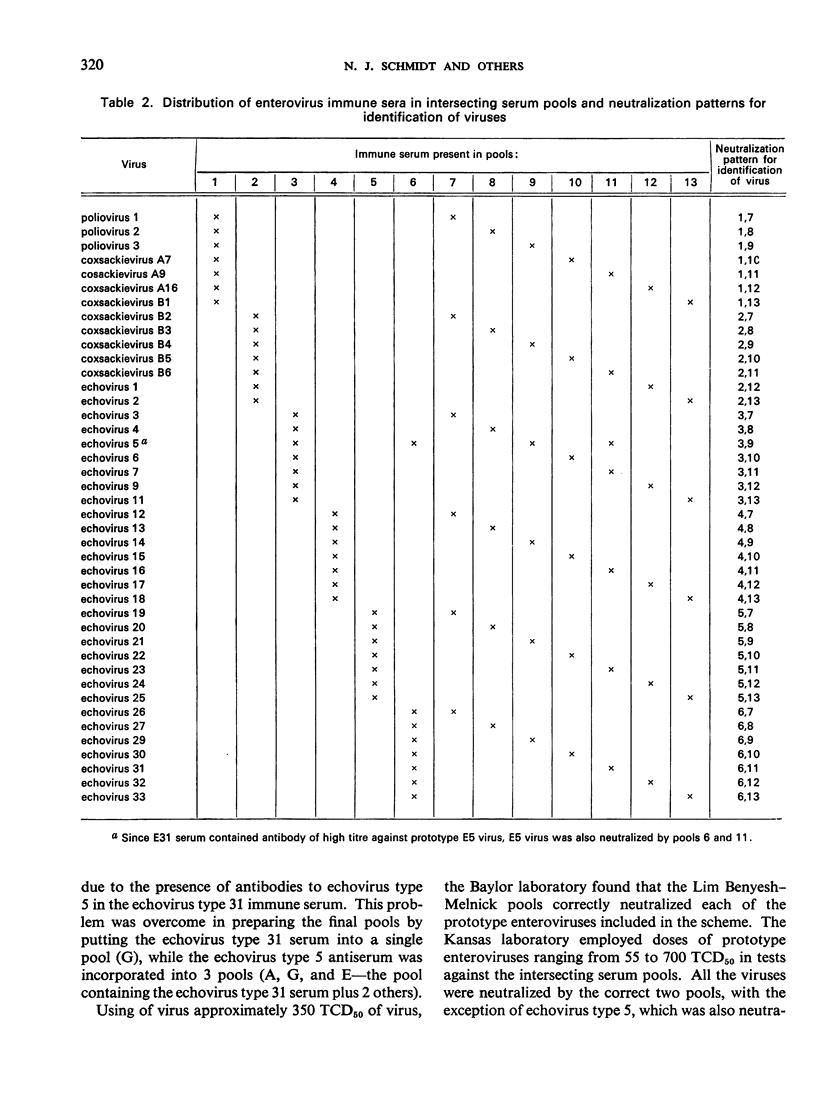
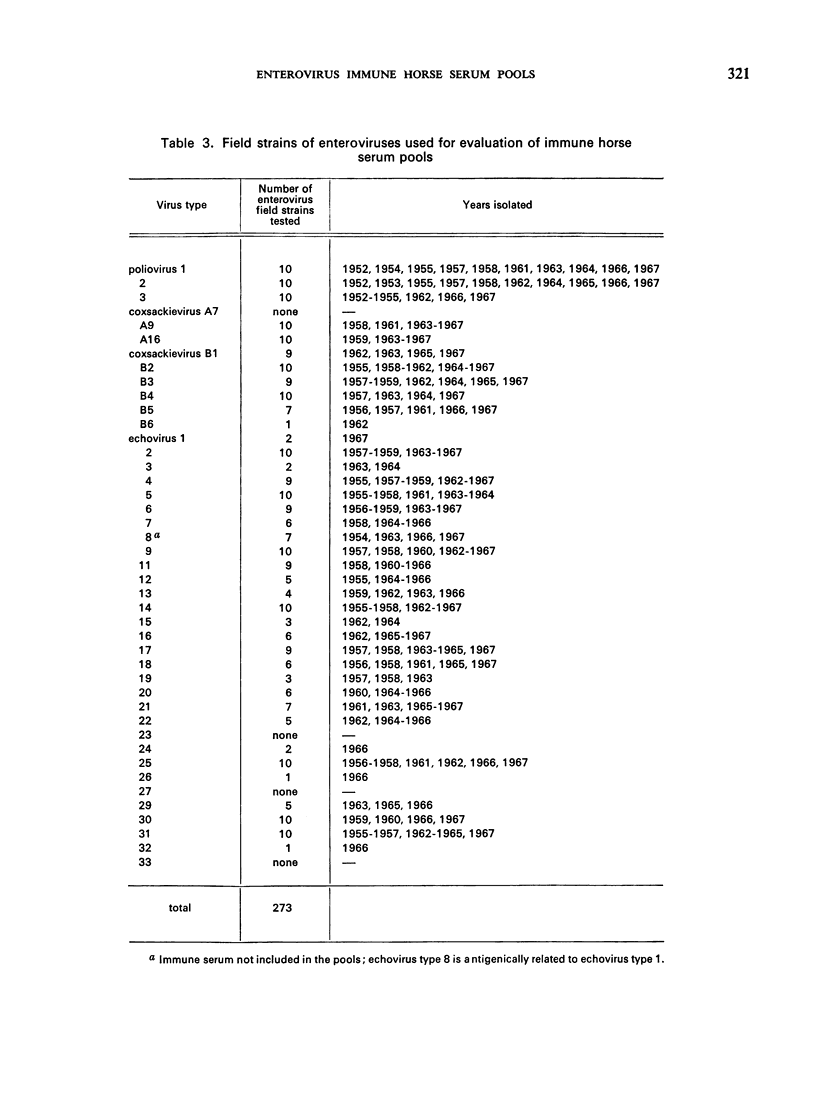
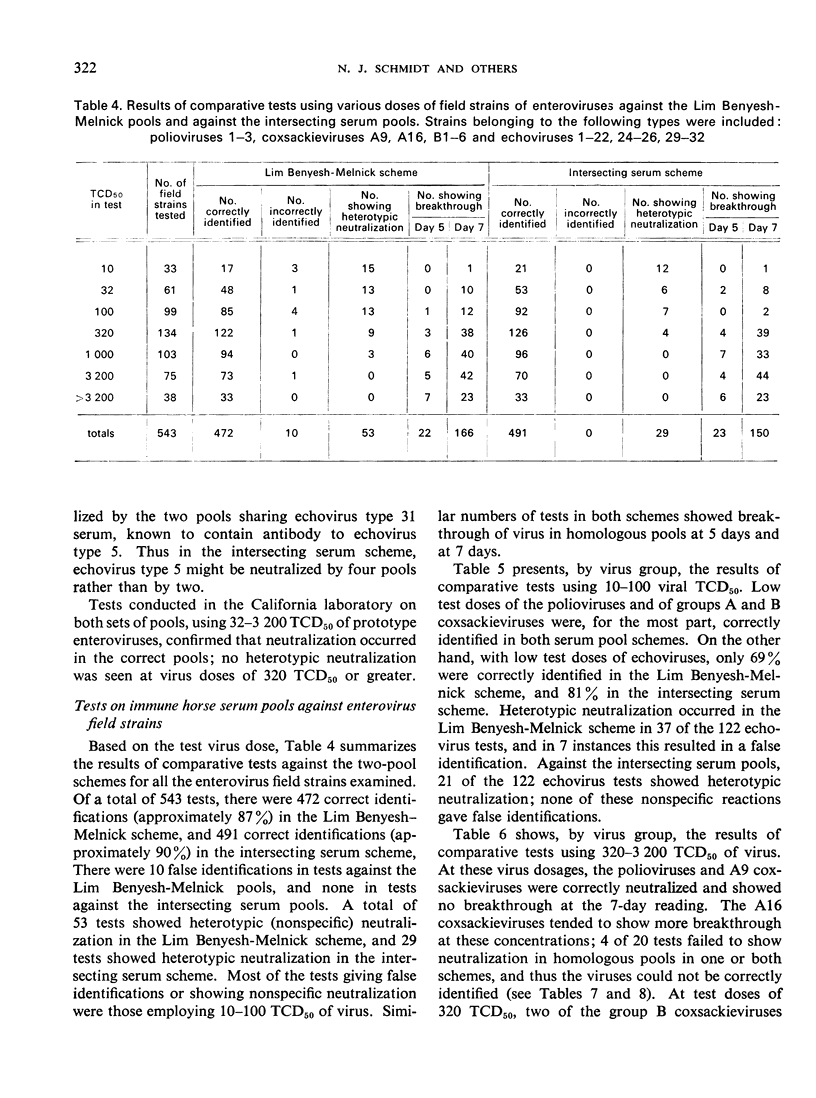
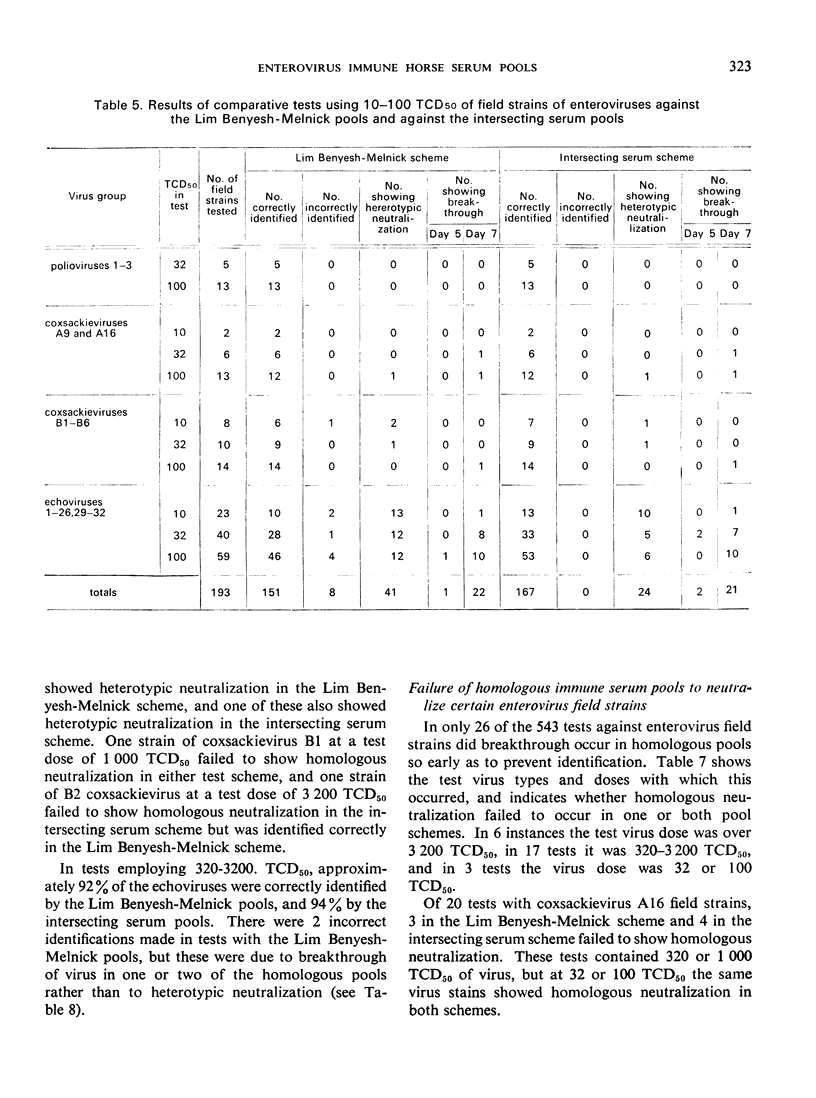
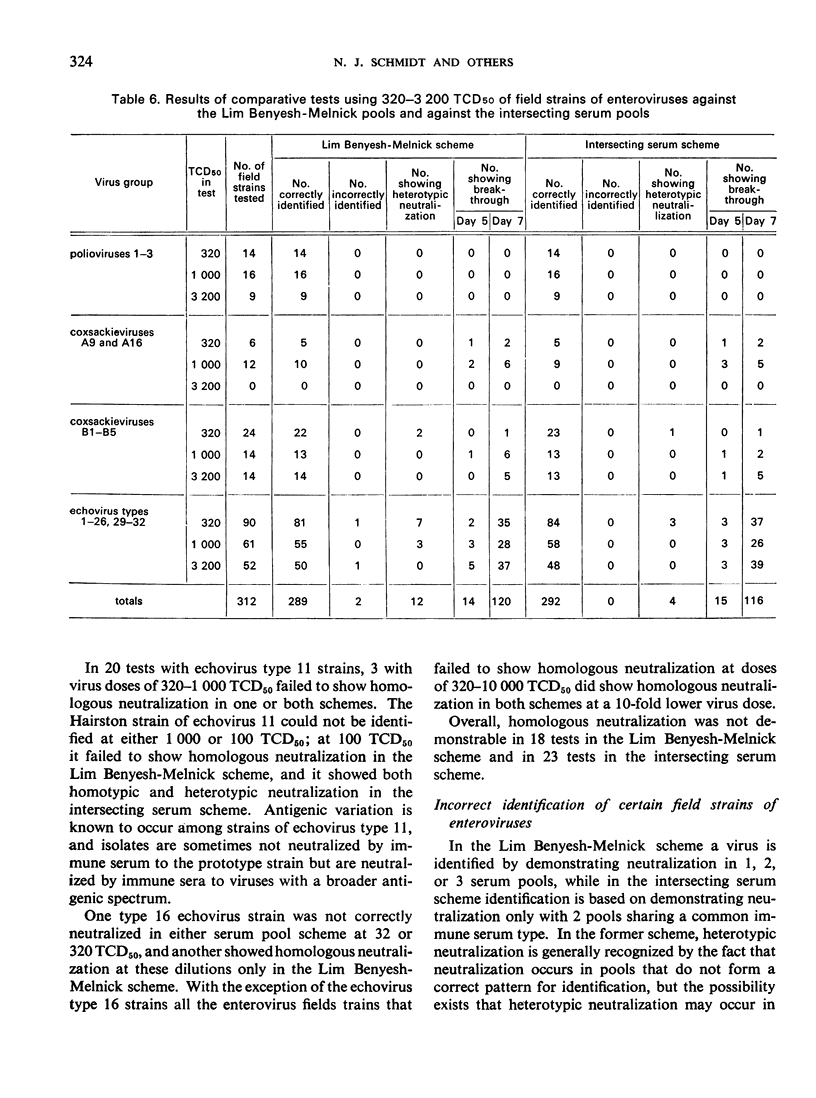
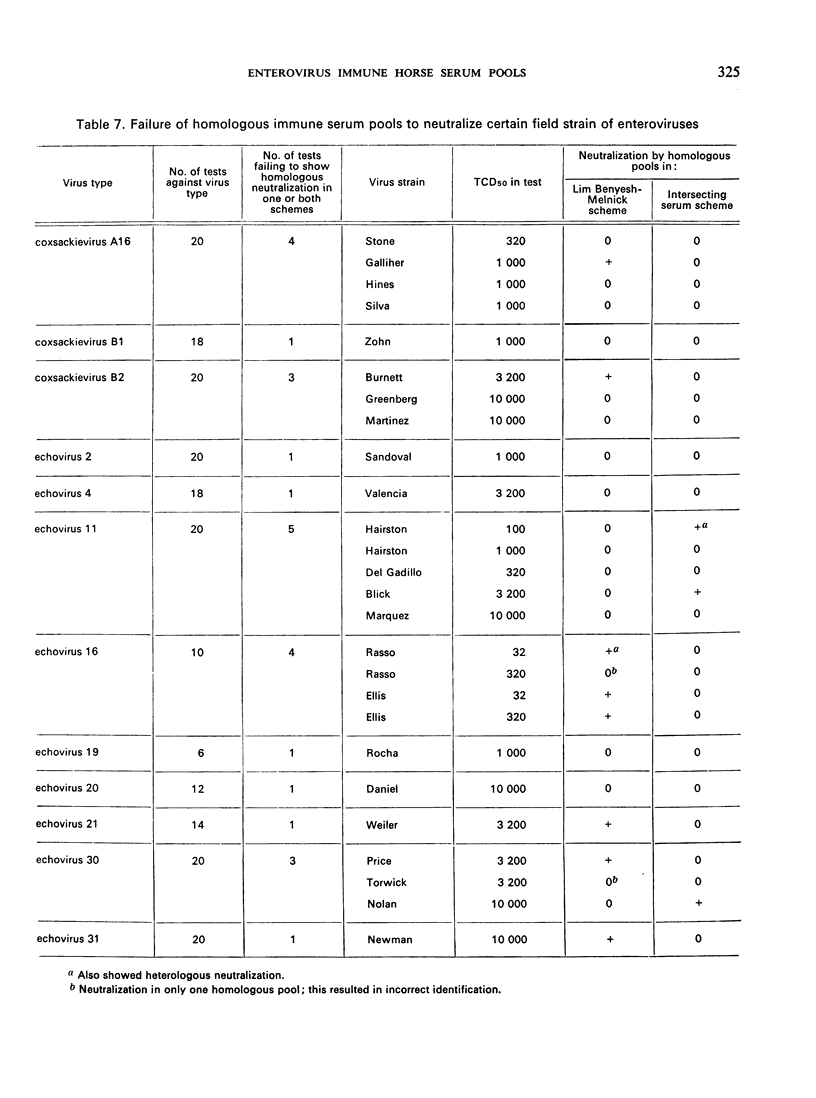
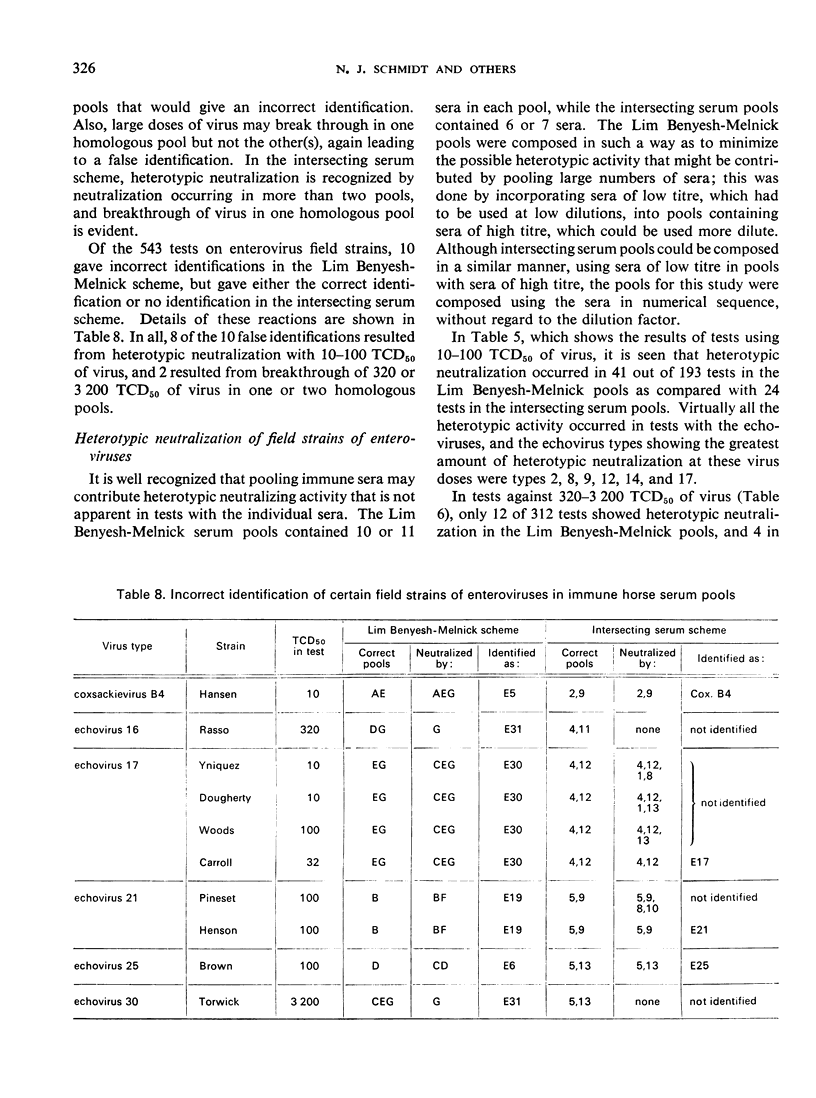
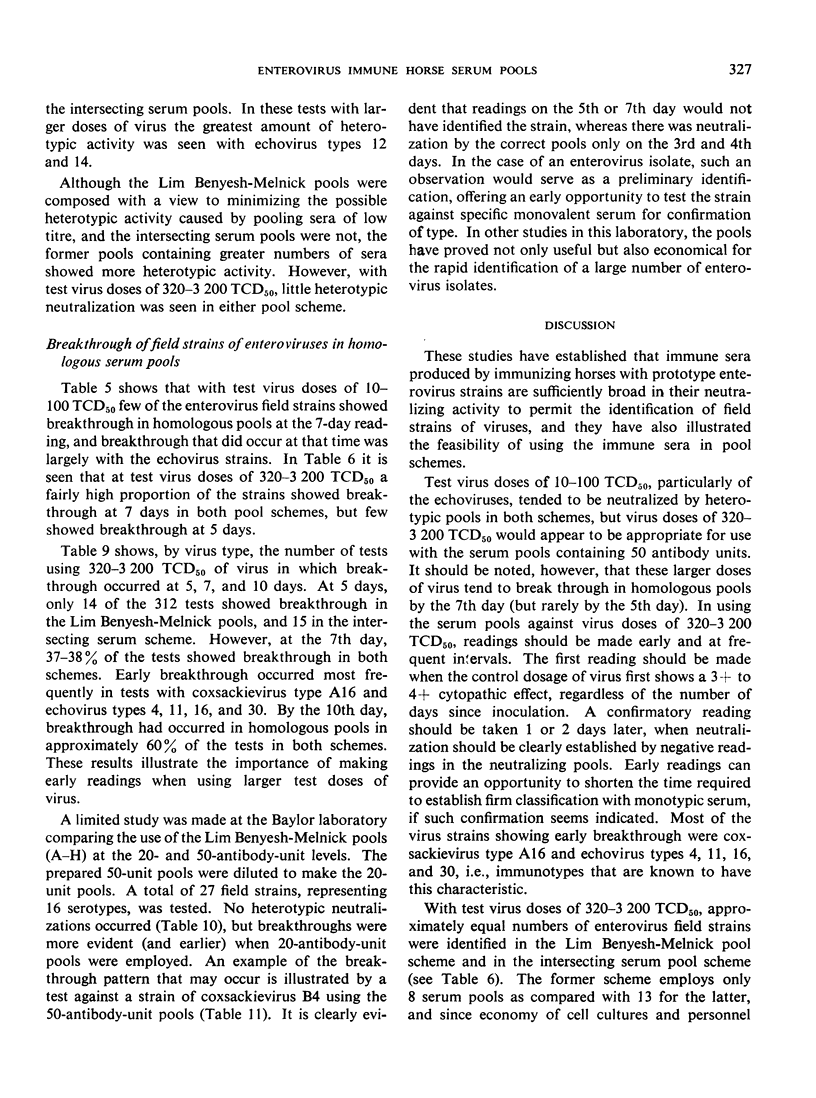
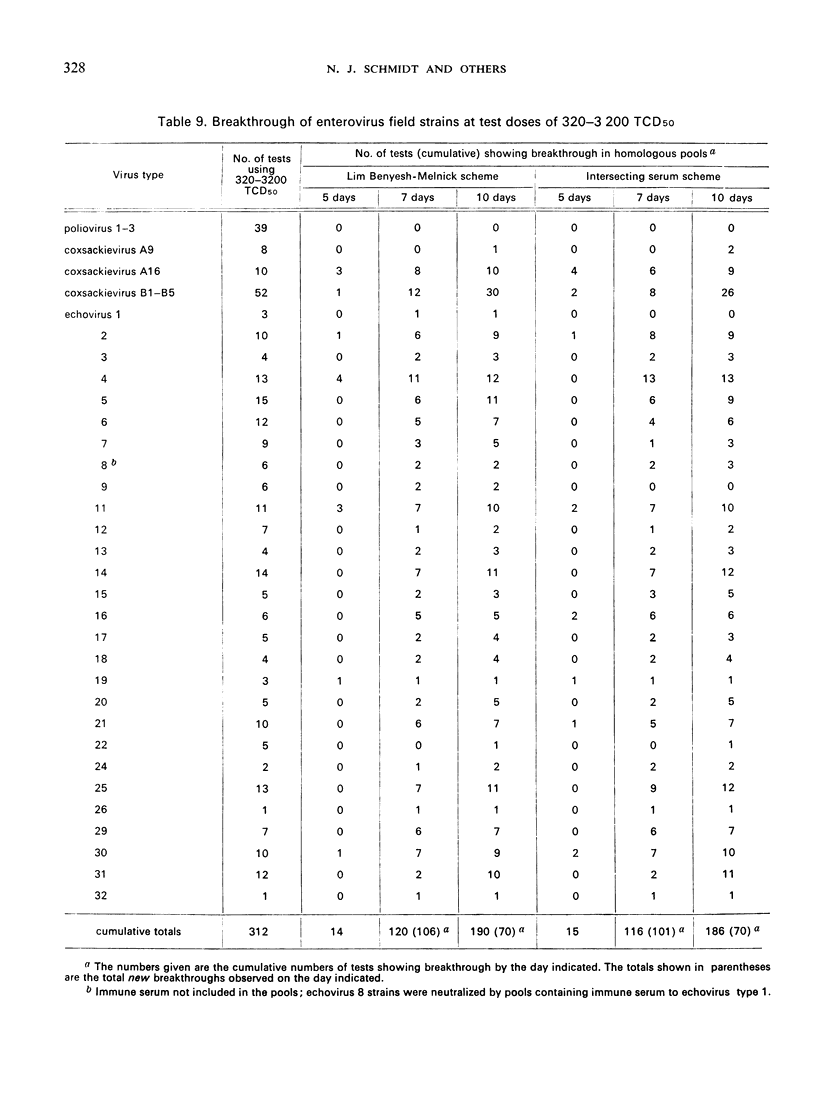
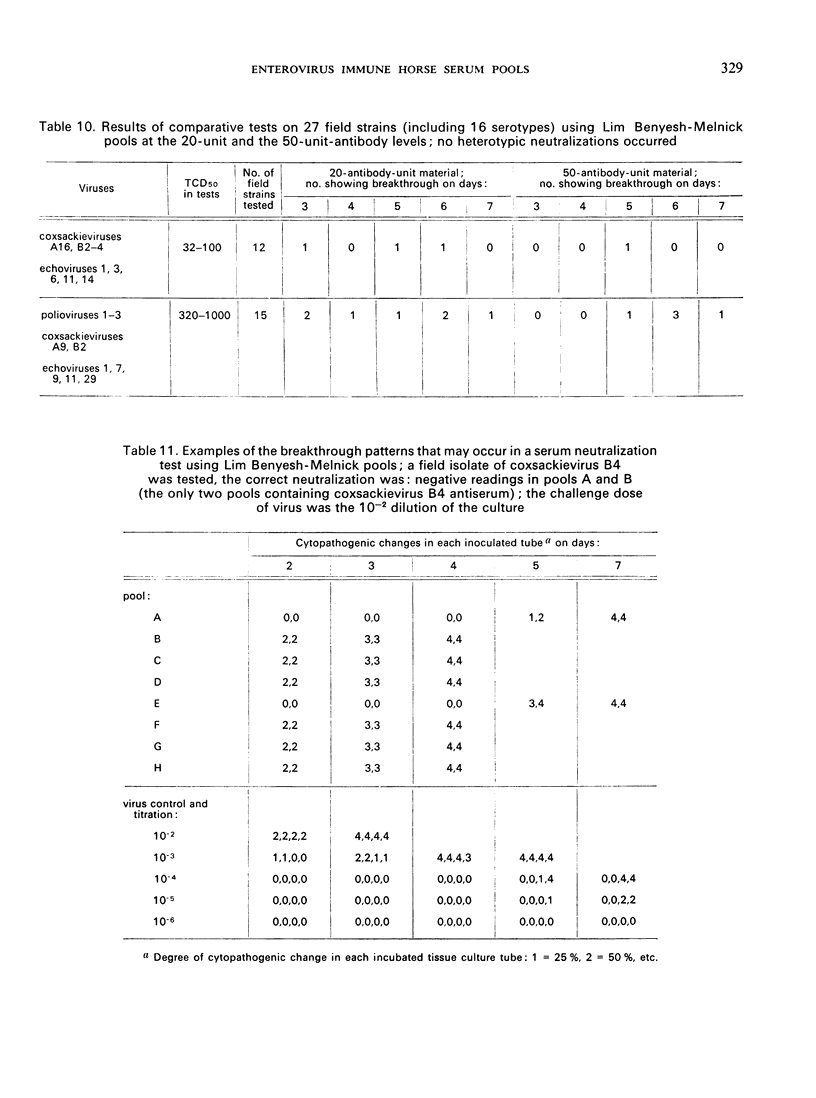
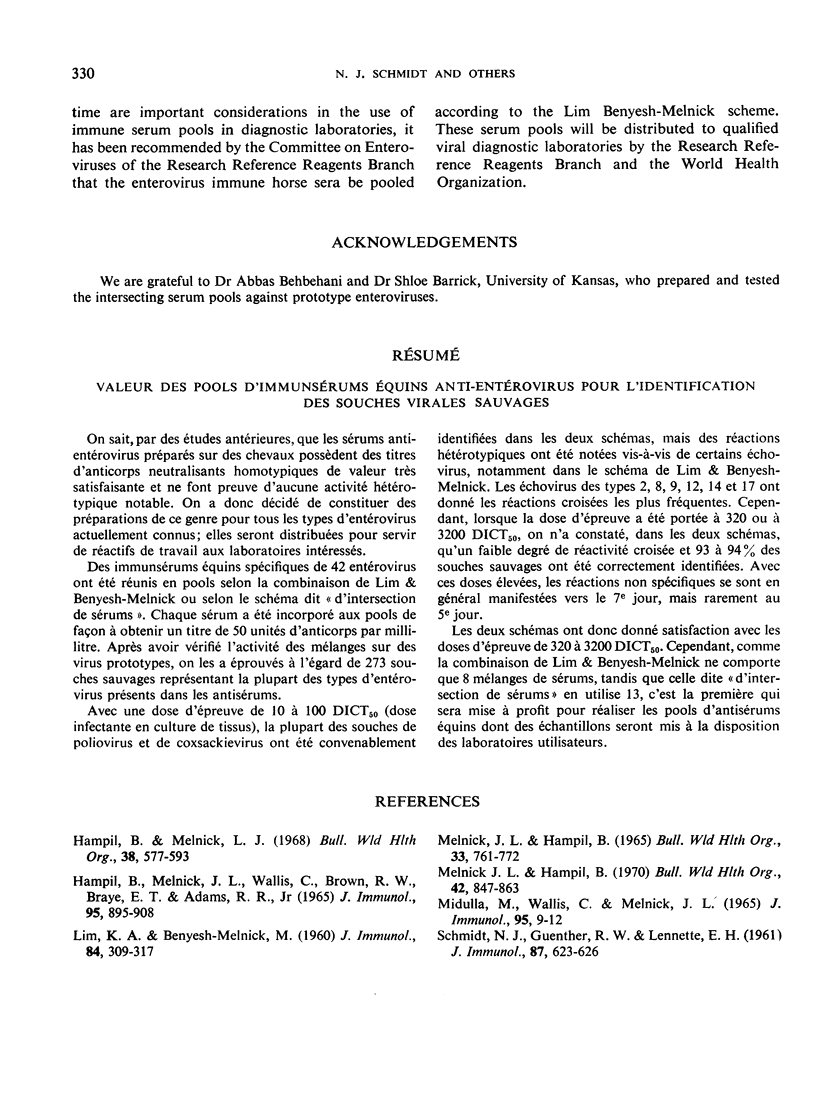
Selected References
These references are in PubMed. This may not be the complete list of references from this article.
- Hampil B., Melnick J. L. WHO collaborative studies on enterovirus reference antisera: second report. Bull World Health Organ. 1968;38(4):577–593. [PMC free article] [PubMed] [Google Scholar]
- Hampil B., Melnick J. L., Wallis C., Brown R. W., Braye E. T., Adams R. R., Jr Preparation of antiserum to enteroviruses in large animals. J Immunol. 1965 Nov;95(5):895–908. [PubMed] [Google Scholar]
- LIM K. A., BENYESH-MELNICK M. Typing of viruses by combinations of antiserum pools. Application to typing of enteroviruses (Coxsackie and ECHO). J Immunol. 1960 Mar;84:309–317. [PubMed] [Google Scholar]
- MIDULLA M., WALLIS C., MELNICK J. L. ENTEROVIRUS IMMUNIZING ANTIGENS IN THE FORM OF CATION-STABILIZED AND CONCENTRATED VIRUS PREPARATIONS. J Immunol. 1965 Jul;95:9–12. [PubMed] [Google Scholar]
- Melnick J. L., Hampil B. WHO collaborative studies on enterovirus reference antisera. Third report. Bull World Health Organ. 1970;42(6):847–863. [PMC free article] [PubMed] [Google Scholar]
- Melnick J. L., Hampil B. WHO collaborative studies on enterovirus reference antisera. Bull World Health Organ. 1965;33(6):761–772. [PMC free article] [PubMed] [Google Scholar]
- SCHMIDT N. J., GUENTHER R. W., LENNETTE E. H. Typing of ECHO virus isolates by immune serum pools. The "intersecting serum scheme". J Immunol. 1961 Nov;87:623–626. [PubMed] [Google Scholar]


